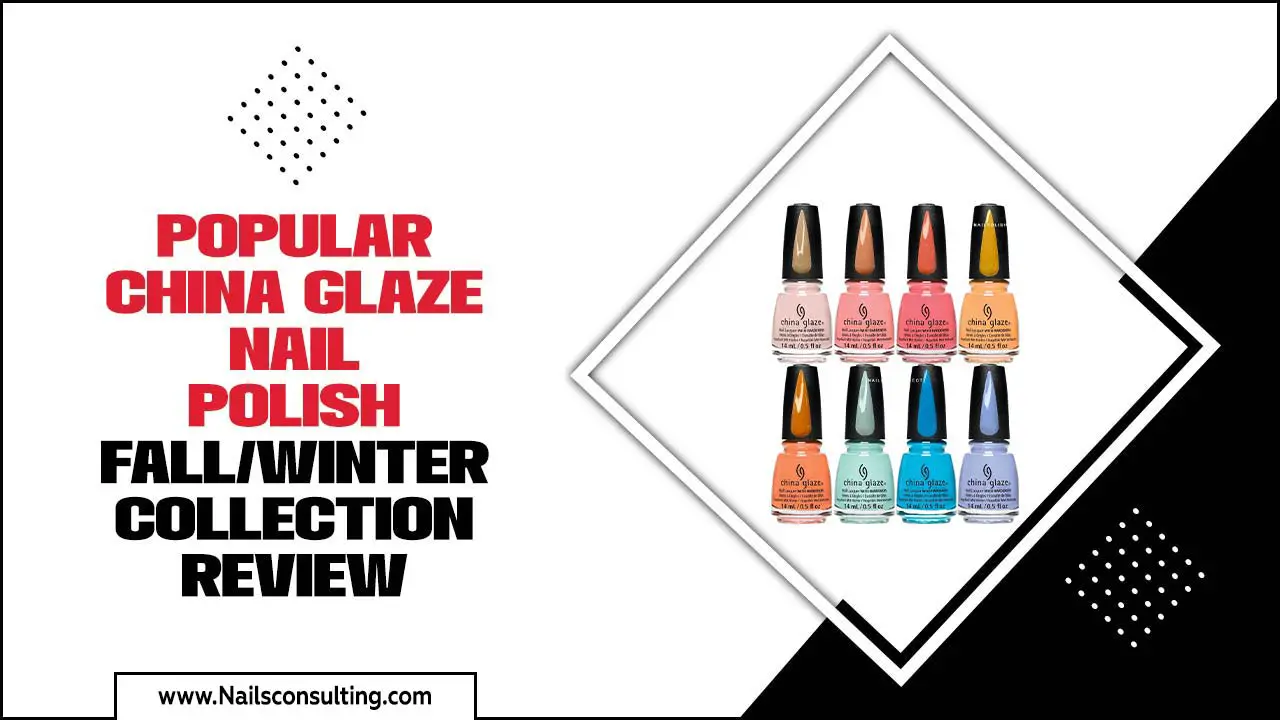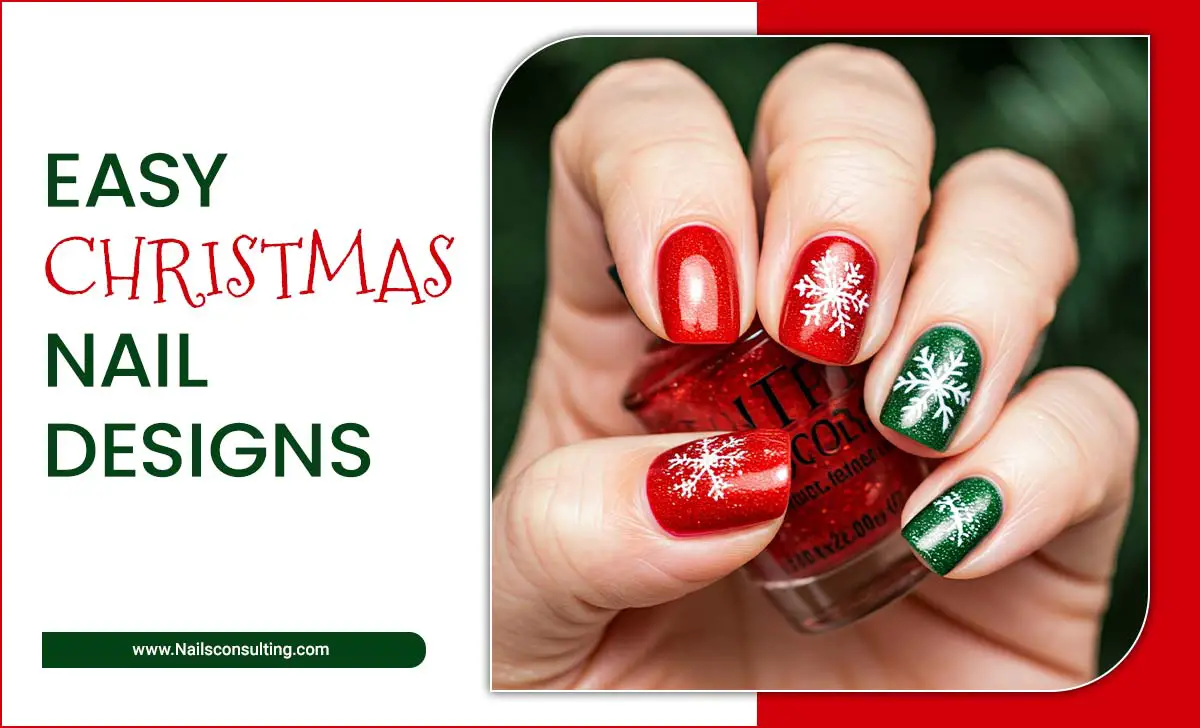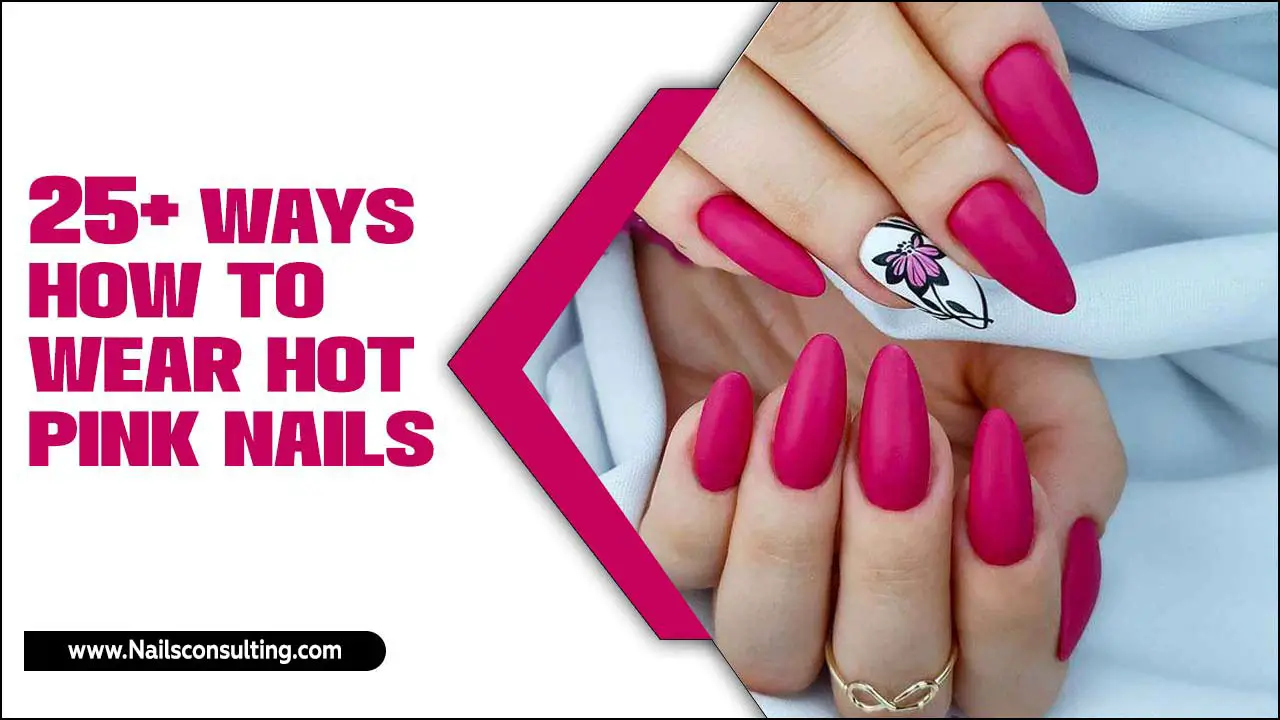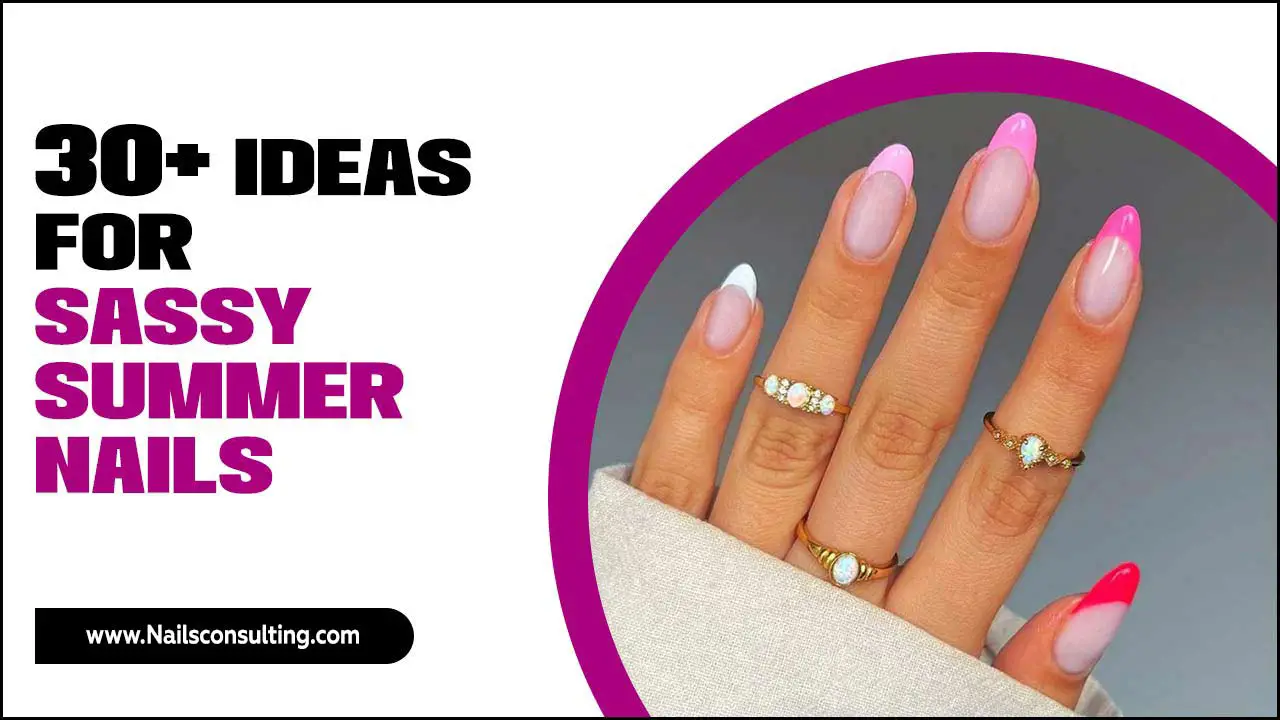Color blocking nails put bold color combinations front and center for a vibrant, modern look. This beginner-friendly technique uses distinct blocks of color, creating a striking visual effect that’s surprisingly easy to achieve. Master this trend for instantly stylish and expressive fingertips!
Feeling a bit stuck in a nail art rut? Want to add a splash of personality to your look without diving into super intricate designs? You’re in the right place! Nail art can sometimes feel intimidating, especially when you see those incredibly complex masterpieces online. But what if I told you there’s a super stylish trend that’s actually incredibly simple to master, even for absolute beginners? Enter color blocking nails! This is all about playing with distinct, solid areas of color on your nails to create eye-catching, graphic designs. It’s bold, it’s modern, and the best part? You can totally do it yourself with just a few basic tools and colors. Get ready to unlock a world of creative and effortless nail looks that will have everyone asking, “Where did you get your nails done?” We’ll break down everything you need to know to get started, from essential tools to fun design ideas to get your nails looking fresh and fabulous.
What Exactly is Color Blocking in Nail Design?
Color blocking in nail art is inspired by the fashion and art technique of using large, distinct areas of solid color to create a design. Think of it like a painter filling in different sections of a canvas with pure, unblended hues. On nails, this translates to clean lines separating solid blocks of contrasting or complementary colors. It’s graphic, it’s contemporary, and it makes a statement. Unlike ombre or intricate patterns, color blocking is all about sharp divisions and bold color play. It’s a fantastic way to showcase two, three, or even more colors in a sophisticated yet playfully bold manner.
Why Color Blocking Nails are a Must-Try for Every Nail Lover
So, why has this trend taken off and why should you jump on the color blocking bandwagon? Let’s count the ways:
- Simplicity: Seriously, it’s way easier than it looks! You don’t need a steady hand for tiny details.
- Versatility: It works with any color palette you can imagine, from soft pastels to vibrant neons.
- High Impact: Bold color combinations create a powerful visual punch that instantly elevates any outfit.
- Beginner Friendly: Perfect for those new to DIY nail art. Basic tools are all you need.
- Creativity Unleashed: It’s a fantastic canvas for expressing your mood, personal style, or even matching your accessories.
- Trendy & Chic: Color blocking is a timeless design concept that keeps coming back in fashion, making it a consistently stylish choice.
- Customizable Confidence: You can tailor the colors and placement to flatter your skin tone or just make you feel amazing.
Ready to get started? Let’s dive into what you’ll need!
Essential Tools for Your Color Blocking Manicure
You don’t need a whole professional nail kit to create stunning color blocking designs. Here are the basics to get you started:
- Nail Polish: The stars of the show! Gather a few colors you love. Consider a base coat and a top coat too.
- Base Coat: Preps your nails, prevents staining, and helps polish adhere better.
- Top Coat: Seals your design, adds shine, and makes your manicure last longer.
- Thin Nail Art Brush or Detailer Brush: Essential for creating those clean lines between colors. A fine-tipped brush is perfect.
- Dotting Tool (Optional): Great for making small dots or helping guide lines, but not strictly necessary for basic color blocking.
- Nail Polish Remover: For those little oops moments and cleaning up edges.
- Cotton Swabs or Small Brush: For precise cleanup around the cuticles.
- Painter’s Tape or Adhesive Stencils (Optional): For achieving super crisp, straight lines if you’re not yet comfortable freehanding.
For a deeper dive into essential nail art tools, check out this guide on essential nail art tools from NailPro, a leading industry publication. While some tools are geared toward professionals, the fundamental brushes and their uses are invaluable for DIY enthusiasts.
Your Step-by-Step Guide to Perfect Color Blocking Nails
Let’s get painting! This guide will walk you through creating a simple, yet chic, two-color block design. You can adapt these steps for more colors as you get comfortable.
Step 1: Prep Your Nails
Like any good manicure, it all starts with a solid foundation. Make sure your nails are clean, dry, and free of any old polish. Gently push back your cuticles if needed, and file your nails to your desired shape. Apply a thin layer of your favorite base coat and let it dry completely. This protects your natural nail and helps your colors pop.
Step 2: Apply Your First Color
Choose one of your colors and apply one or two thin, even coats to all the nails where you want this color to be the primary shade. For example, in a diagonal split design, you might apply your first color to about half of each nail. Let this layer dry completely. Patience here is key to avoid smudging!
Step 3: Create the Color Block Division
This is where the magic happens! You have a few options:
- Freehand with a Brush: Dip your thin nail art brush into your second polish color. Carefully paint a clean line where you want the first color to end and the second to begin. This could be a straight line across the nail, a diagonal split, or a curved edge.
- Using Painter’s Tape: Once your first color is completely dry, carefully apply a strip of painter’s tape to create a sharp dividing line. Press down the edges firmly to prevent polish from bleeding underneath.
The goal is a crisp division. If you’re freehanding, take your time! It’s okay to go slowly.
Step 4: Apply Your Second Color
Now, fill in the remaining section of your nail with your second polish color. Apply one or two thin coats for full opacity. If you used painter’s tape, make sure the polish doesn’t seep under the edges. If you freehanded, try to paint right up to your line.
- Pro Tip: If you’re using painter’s tape, wait for the first color to be completely dry before applying the tape. Once the second color is applied and still slightly wet, carefully peel off the tape. This helps prevent lifting or smudging the design.
Step 5: Clean Up and Refine
Dip a cotton swab or a small detail brush into nail polish remover. Carefully clean up any stray marks around your cuticle line or any polish that may have smudged. This step can make a huge difference in how professional your nails look!
Step 6: Add the Top Coat
Once all your colors are completely dry, apply one or two layers of a good-quality top coat. This will seal in your design, add a beautiful glossy finish, and help your manicure last much longer. Make sure to cap the free edge of your nails (the very tip) with the top coat for extra durability.
Step 7: Dry and Admire!
Let your nails dry thoroughly. Try not to do anything that could smudge them for at least 15-20 minutes. Now step back and admire your gorgeous, handmade color-blocked nails!
Genius Color Blocking Nail Design Ideas to Inspire You
The possibilities really are endless! Here are some popular and easy-to-achieve color blocking design ideas to get your creativity flowing:
1. The Classic Diagonal Split
Imagine your nail is split from one corner to the opposite. Apply one color on one half and a contrasting or complementary color on the other. This is one of the simplest and most dramatic ways to do color blocking.
Colors to try: Teal and coral, navy and mustard yellow, black and white.
2. The Horizontal Block
Divide your nail into two or three horizontal sections. This can be done from the tip down, or from the cuticle up. Think of the French manicure but with solid blocks instead of a color tip.
Colors to try: Pastel pink and baby blue, a gradient effect with three light shades, or bold red and black blocks.
3. The French Tip Color Block
Instead of the traditional white French tip, use a solid block of color for your tip. You could even do a block of color across the entire nail bed and a different colored block for the tip.
Colors to try: A sheer nude base with a bright fuchsia block tip, or a creamy beige with a deep forest green block tip.
4. Geometric Shapes
Use your thin brush or tape to create geometric shapes like squares, rectangles, or triangles within a single nail. You can have a large block and then a smaller contrasting shape within it, or divide the nail into several geometric sections.
Colors to try: A nude base with a sharp geometric block in emerald green and gold.
5. The Cut-Out or Negative Space Block
This modern take involves leaving a small section of the nail bare (natural or with just a clear coat) and creating solid color blocks around it. This is chic and sophisticated, allowing the natural nail to be part of the design.
Colors to try: A deep burgundy block surrounding a clear, moon-shaped negative space near the cuticle.
6. The ‘Half-Moon’ Color Block
Similar to negative space, but you create a solid “half-moon” shape at the base of your nail with one color, and then fill the rest of the nail with another. It’s a stylish twist on the classic.
Colors to try: A classic red half-moon with a crisp white top block.
7. Asymmetrical Color Blocks
Don’t feel confined to perfect halves or straight lines! Create dynamic, asymmetrical blocks of color. One nail might have a large dominant block and a small accent block, while another has two equal, uneven sections. This adds an artistic, modern edge.
Colors to try: A vibrant orange with a sharp, dark purple accent block on an otherwise neutral nail.
Color Palette Inspiration for Your Next Mani
Choosing colors is half the fun! Here are some popular and effective color palette pairings:
| Palette Type | Color Combinations | Vibe | Best For |
|---|---|---|---|
| Contrasting & Bold | Navy Blue & Bright Orange | Energetic, Fun, Eye-Catching | Summer, Parties, Statement Makers |
| Black & White | Classic, Chic, Sophisticated | Any occasion, Effortless style | |
| Hot Pink & Emerald Green | Luxurious, Playful, Dramatic | Fashion-forward looks, Special events | |
| Harmonious & Soft | Pastel Mint & Baby Pink | Gentle, Sweet, Dreamy | Spring, Everyday wear, Bridal |
| Lavender & Light Blue | Calm, Serene, Airy | Relaxing days, Casual chic | |
| Earthy & Chic | Olive Green & Mustard Yellow | Boho, Grounded, Stylish | Fall, Casual outings |
| Terracotta & Cream | Warm, Natural, Sophisticated | Everyday elegance, Autumn vibes | |
| Monochromatic | Different shades of the same color (e.g., light blue, medium blue, dark blue) | Subtle, Sleek, Modern | When you want color without clashing |
Remember, the key to good color blocking is often strong contrast or intentional harmony. Don’t be afraid to experiment with shades you wouldn’t normally put together!
Tips for Achieving Crisp Lines (The Secret Weapon!)
Achieving those perfectly sharp lines is the hallmark of a great color block design. Here are some pro tips:
- Thin, Stable Coats: Never apply thick, gloopy layers of polish. Thin, even coats dry faster and are less prone to smudging or bleeding under tape.
- Let Each Layer Dry (Mostly): While you don’t want your second color to be bone dry before applying the tape, your first color definitely needs to be dry to the touch. If you’re freehanding, ensure the first color is fully cured.
- The Tape Trick: If using painter’s tape, press the edges down firmly with your fingernail or a cuticle pusher. This creates a strong seal.
- Peel Carefully: When using tape, peel it off slowly and at an angle, ideally when the second color is still slightly wet but not sticky. This often results in a cleaner line.
- Double Up on Top Coat: A good top coat can sometimes smooth out minor imperfections and seal everything beautifully.
- Clean Up is Crucial: A small brush dipped in nail polish remover is your best friend for tidying up any wobbly bits.
Understanding nail health is also important for any nail art. For tips on maintaining healthy nails, the American Academy of Dermatology’s website offers excellent resources, such as their guide to nail care.
Common Beginner Mistakes and How to Avoid Them
Even the simplest designs can have a few hiccups when you’re starting out. Here are common pitfalls and how to sidestep them:
- Rushing Steps: The biggest culprit! Not letting polish dry properly leads to smudges and bleeding. Be patient.
- Thick Polish Application: This makes drying take forever and increases the chance of dents and smudges. Thin, even coats are best.
- Not Using a Base/Top Coat: A base coat protects your nails from staining, especially with dark colors. A top coat seals your art and adds shine, extending its life.
- Wobbly Lines: If freehanding, practice makes perfect! Don’t be afraid to use tape or stencils when you’re starting out.
- Ignoring Cleanup: Those little polish errors around the cuticle can make a great design look messy. A quick cleanup makes a world of difference.
- Too Many Colors (Initially): Start with two colors. Once you’re comfortable, you can build up to three or more. Simplicity is key when you’re learning.
Color Blocking Nail Design Cheat Sheet
Here’s a quick reference for your color blocking journey:
| Step | Action | Key Tip |
|---|---|---|
| 1. Prep | Clean, file, base coat. | Ensure nails are smooth and dry. |
| 2. First Color | Apply to designated area. | Apply thin, even coats. Let dry. |
| 3. Division | Draw line freehand or use tape. | Aim for crisp. Press tape edges firmly. |
| 4. Second Color | Fill in remaining area. | Peel tape while polish is slightly wet (if used). |
| 5. Clean Up | Use remover and brush/swab. | Tidy edges for a professional finish. |
| 6. Top Coat | Apply 1-2 coats. | Cap the free edge for durability. |
| 7. Dry | Allow thorough drying time. | Avoid smudges by waiting patiently. |
Frequently Asked Questions About Color Blocking Nails
Q1: Is color blocking hard to do myself?
A1: Not at all! Color blocking is one of the most beginner-friendly nail art techniques. It relies on distinct shapes and solid colors, rather than intricate details, making it very achievable for DIYers.
Q2: What are the best types of polish for color blocking?
A2: Standard crème polishes work wonderfully for solid blocks. If you want a more modern look, metallic or shimmer polishes can also be used, but ensure they apply smoothly for best results. Avoid glitters that are too textured or difficult to control.
Q3: Can I use nail striping tape for color blocking?
A3: Absolutely! Nail striping tape is excellent for creating super straight, edgy lines. Just make sure to




